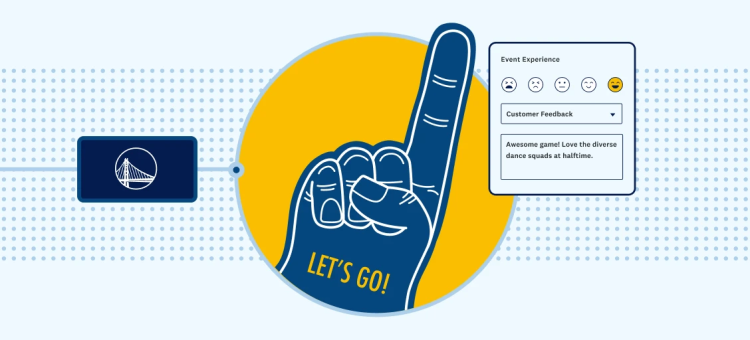We recently published our extensive guide, “How to measure Diversity and Inclusion for a stronger workplace,” where we were lucky enough to feature advice from 5 industry experts alongside a suite of free survey templates and instructions for how to use them.
One thing that came up frequently in our expert interviews were things that companies—even with the best intentions—tend to get wrong from a D&I perspective. Here are a few examples of common problems that our experts called out—and ways HR leaders can help address them.
You want to prioritize diversity, but don’t think intersectionally. —Aubrey Blanche, Head of Diversity and Belonging at Atlassian

“One mistake that companies often make when they first start thinking about D&I is that they don’t think intersectionally. Each of your employees has layers—lots of different identities. And when many companies start thinking about diversity they say, ‘diversity equals more women.’ And that’s a great intention, but sometimes that means you don’t think about different groups of women within that group. You only build programs that speak to straight white cisgender economically privileged women.
But when you start to think beyond “meeting diversity metrics” and start to think about building balanced teams, those are potentially your strongest opportunities for impact.”
What you can do about it: Instead of treating diversity as (only) a company-wide quota, focus on incorporating different viewpoints at a team level. You can’t reap the business benefits of diversity if all of your representation from underrepresented groups is clustered in HR or marketing.
Our free diversity survey helps you get to know employees on multiple levels, across departments, so you can track representation on different teams. And if you’re worried that asking might be sensitive—don’t. People are used to being asked about it, and according to the Census Bureau, people are no more likely to skip these types of questions than any other.
View employees holistically, and aim to bring together as many points of view as possible, and your business will be stronger for it.
You ban offensive behavior, but don’t educate about what offensive behavior is.—Heidi Williams, CTO and Co-Founder of tEQuitable

“Many of the stories reported on our platform could be considered microaggressions. They include stereotyping, tokenizing, or making assumptions about someone based on their race, gender, sexual orientation, age, religion, or other aspects of a person’s identity...Microaggressions can affect people from every demographic, but they tend to affect employees from underrepresented groups the most.
Microaggressions usually aren’t a conscious choice. Most people don’t wake up in the morning looking for ways to be a jerk. There are a few factors that come into play: ignorance and lack of education about the right way to behave and hesitation to ask questions. Even people with good intentions might not understand how their words and actions could be offensive or ask questions to increase their understanding.”
What you can do about it: Set up explicit training sessions that explain what types of behavior are acceptable and which aren’t, and make the trainings a conversation. Heidi was quick to explain that employees need to know that it’s okay to make a mistake—having that sense of comfort makes it easier to facilitate open discussion.
60% of people have witnessed, or might have witnessed, a microaggression at work. But there’s still a lot of ambiguity around how people of different backgrounds define them. Having spaces to discuss the issues openly tells employees that you take their comfort seriously.
You take a one-size-fits-all approach to company policies.—Natasha Walton, Founder of the Tech Disability Project

“In general, companies tend to forget that every employee is a unique individual with differing access needs. When employers enact rigid policies that require all employees to work in a similar way, it...can make disabled employees feel as though they need to hide their disabilities and access needs, putting increased stress on those individuals and preventing them from bringing their whole selves to work.
Many people with disabilities need flexibility when it comes to hours and location, allowing them to work from home if and when they need to, or to go to appointments during the work day. But that’s far from standard, even in roles where the majority of the work is digital.“
What you can do about it: Talk to employees about their needs when they start, and be clear about where you can be flexible. If your policy requires employees to share their reasons for missing work publicly, consider reevaluating that policy or making an exception for people who will have frequent appointments. Allow work from home when possible, and make an effort to make team offsites accessible for everyone. These little changes can make a big difference when it comes to employee experience.
You—and your leadership team—don’t talk about mental health.—Bernie Wong, Senior Associate at Mind Share Partners

“Despite their ubiquity, mental health stigma is especially prevalent in the workplace where it remains a taboo topic. 8 out of 10 employees report this stigma as a barrier to getting treatment...You need vocal support. Leaders are culture-setters at their organization. You can have programs and resources in place, but research shows that employees are reluctant to use company benefits unless they see that their supervisor and company as a whole support their use.
At a recent workshop, a senior executive shared a personal story about their experience with mental health. In just a 10-minute share, the executive signaled to the rest of the company that it was okay to have these experiences and opened the door for further conversations about mental health.”
What you can do about it: Talk about it. Have leaders—from outside HR wherever possible—discuss the importance of mental health at town halls. Have guest speakers who focus on mental health, or bring in specialists like Mind Share Partners. If you have any corporate values about health and wellness, make sure that mental health is explicitly included.
In our recent study, we found 30% of employees aged 25-34 are affected by anxiety or depression either all the time or often, but less than half would take a day off to improve their mental health. Those who would are about twice as likely to call in sick than to openly admit to taking a mental health day (32% vs. 15%). Even if your company has mental health benefits available, there’s still power in taking the time to educate.
You encourage employees to seek mentorship—but don’t facilitate it. —Charu Sharma, CEO and Founder of NextPlay.ai

Expecting employees to find their own mentors is problematic for both the individual and their employer. People who don’t feel like they can access a mentor within their organization are more likely to look elsewhere, which might ultimately lead to loss of talent if those employees decide to follow their mentors elsewhere.
Relying on personal networks also inherently disadvantages people from underrepresented groups. People who didn’t go to a certain school or look a certain way are less likely to have access to advisors who can help them. Mentorship shouldn’t be a matter of privilege—it should be something that anyone who wants to grow should be able to pursue.
What you can do about it: Build pathways for your employees to receive mentorship from within the company. There are probably already people at your company who would be interested in mentoring or in being a mentee. Our quick mentorship and advocacy survey template can help you find them.
You can set up a system yourself, or use a simple service like NextPlay to give employees an automated program to follow. Evidence suggests mentorship programs help with recruiting, retention, leadership skills, and diversity, and according to researchers at UC Santa Cruz, mentoring programs for new teachers returned $1.50 for every $1 spent. The exact ROI of mentorship on other roles might be more or less, but the general benefit is universal.
No company is perfect, but if you establish an open conversation with your employees, you can work toward a culture where every employee feels heard and where feel they truly belong.
Want metrics for your company culture?
Our comprehensive guide to measuring and building diversity and inclusion includes free templates and expert advice at every stage.



